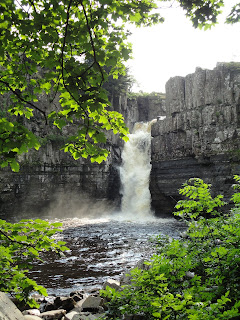 |
To conclude our camping trip in the Summer of 2010 we visited Alnwick Castle and Gardens. Alnwick Castle is also a stately home in Alnwick in Northumberland, it is a Grade I listed building, residence of the Duke of Northumberland and was build after the Norman conquest and has been renovated a number of times. The castle guard a road crossing the River Aln, and the first parts were built in around 1096, it was built to protect the northern border of England against Scottish invasions. Alnwick Castle Website
Below: Another Magnificent View of the Castle Exterior
As well as its magnificent grounds the castle contents a number of exhibits', the castle is also famous for its exterior and interior being used for the Harry Potter Films (2001 - 2011) it was also used for the 2010 Robin Hood Film. The castle embraces this and holds events such as Knight's Quest, Wizarding with Hagrid and Dumbledore and Broomstick Training. Visit Northumberland Website
Above: Castle Exterior (Harry Potter and the Philosophers Stone - Flying Lessons)
The Alnwick Garden
The revived Alnwick Garden was opened around ten years ago, it is an amazing ambitious garden, from a number of landscaped gardens to vibrant water features as well as a huge tree house. One of the main vocal points and water feature is The Grand Cascade which involves 7260 gallons of water tumbling down 21 weirs every minute. Alnwick Garden Website
The gardens include a large collection of European plants as well as a range of unusual plants within the Poison Garden. The garden has a family feel about it and has a lot of chances to get wet and play. The Treehouse is very exciting sitting high in the trees, to add to the excitement there are wobbly rope bridges to walk across in the sky.
This was my first visit to the garden and I found it very intriguing with all the different types of plants and water features, the layout of the garden helps keep you engaged as around each corner there is something completely different and surprising. I particularly liked the water sculpture garden 'The Serpent Garden' and the 'Woodland Walk. Visit Northumberland Website



















